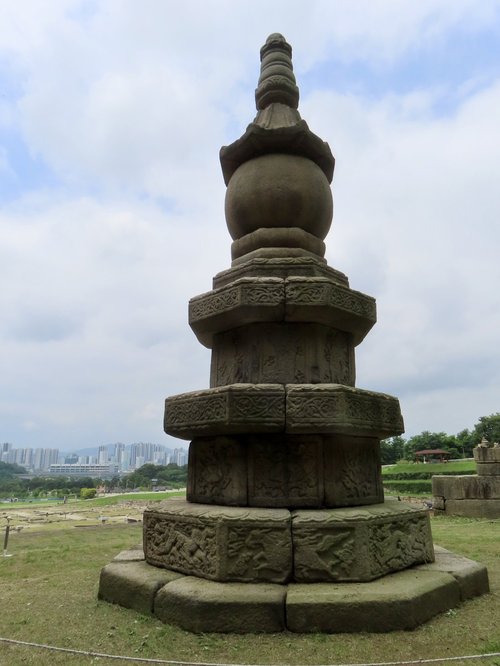Many experienced World Heritage travelers who visited Korea have likely come across remnants of ancient Buddhist Temples, such as those found in Gyeongju, Buyeo, or Iksan. Sometimes all that remains are foundation pillars, perhaps a stone pagoda.
At Hoeamsa, you will see more than that. This temple only closed in the late 16th century and presumably fell into ruin over the next few centuries. From 1997 to 2019, there were extensive excavations at the site, which revealed more of the temple layout, and unearthed a plethora of artifacts currently housed in the museum on-site.
The pathway toward OUV is through the sites 'material testimony to the emerging Seon (Zen) monastic system that was adopted across East Asia in the 14th century.' Additionally, the temple still prospered during the first two centuries of Joseon, despite the decline of Buddhism and rise of Confucianism in Korea. It seems some members of the royal family were not entirely ready to abandon Buddhism as Hoeamsa enjoyed extensive support from within the royal palaces.

Korea is submitting the preliminary evaluation nomination next month (September 2025) with an aim for 2029. I would honestly prefer this site to be included as part of the Eastern Silk Roads initiative (rather than a standalone site) which will eventually become a large serial nomination that includes several dozens sites in China, Korea, and Japan sometime in the next decade.
I believe that Hoeamsa will not be a favorite of this community, yet I suspect it might not have too much trouble demonstrating criteria (iii) and thus be inscribed on a single criteria. To be sure, we will not really know until we get some indication how the preliminary evaluation went. The archaeological evidence seems to be sufficient enough to make some important conclusions about the layout of a Seon (Zen) Buddhist temples and the dissemination of the Zen tradition to Korea.
We visited on a hot sunny day, taking the subway all the way to Yangju and then taking a local village bus to the temple site. Because of the heat we opted not to visit the collection of stupa and stele venerating three important monks associated with Hoeamsa (located north of the Archaeological site).
Flickr Album